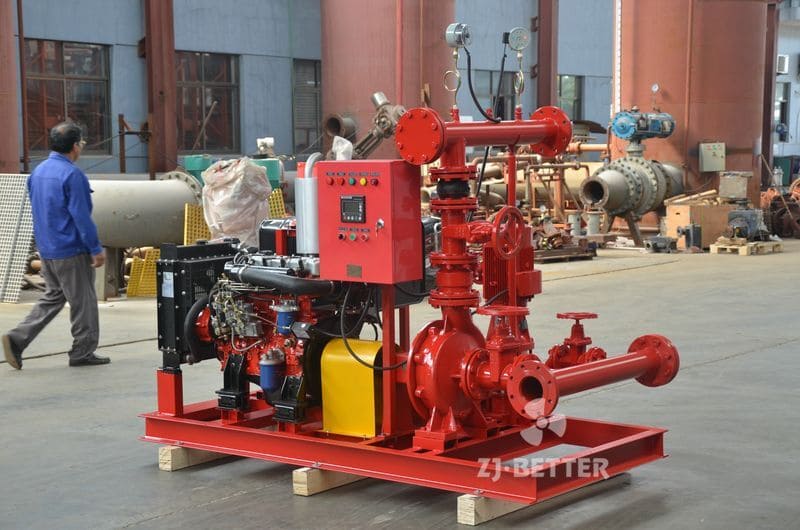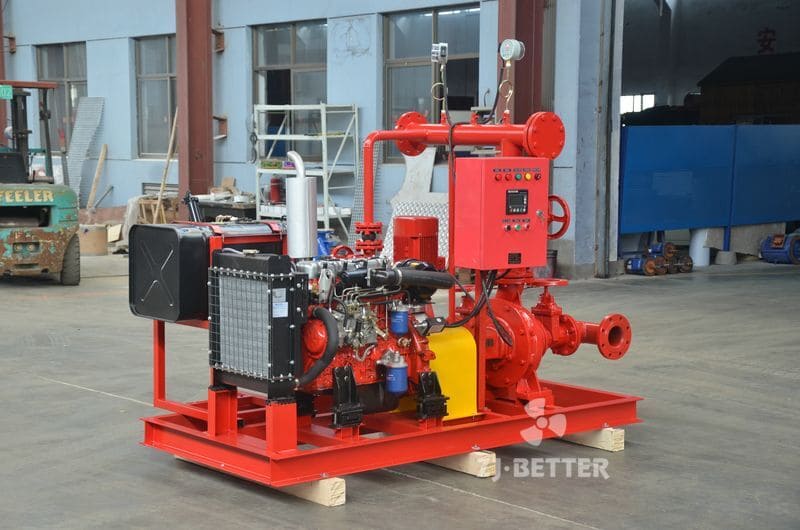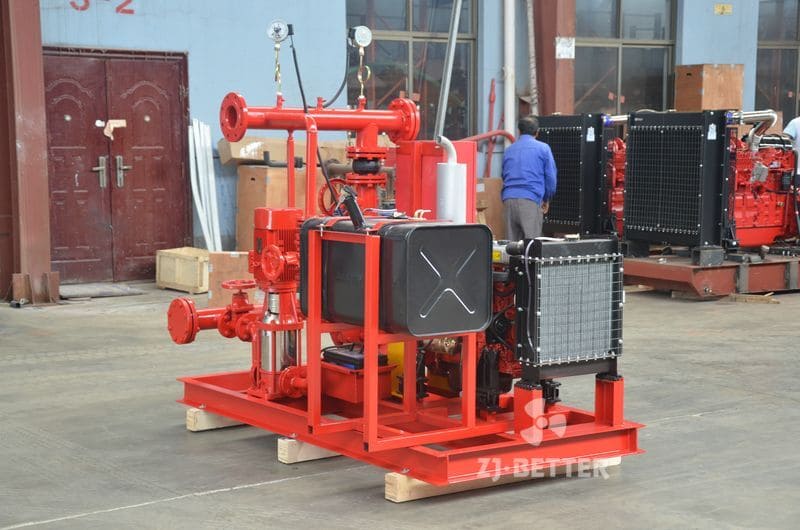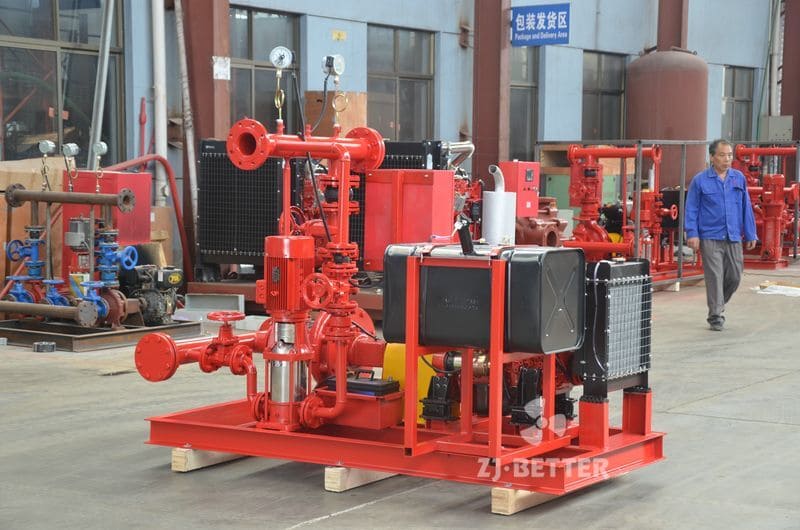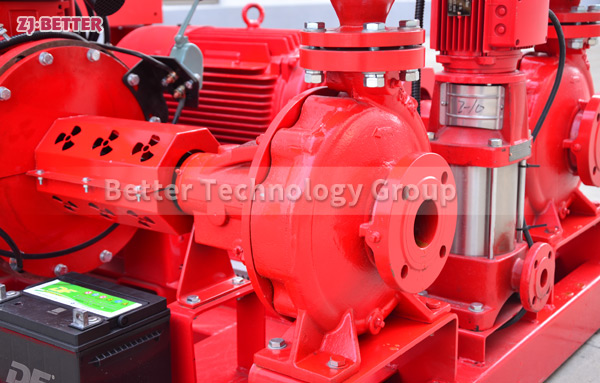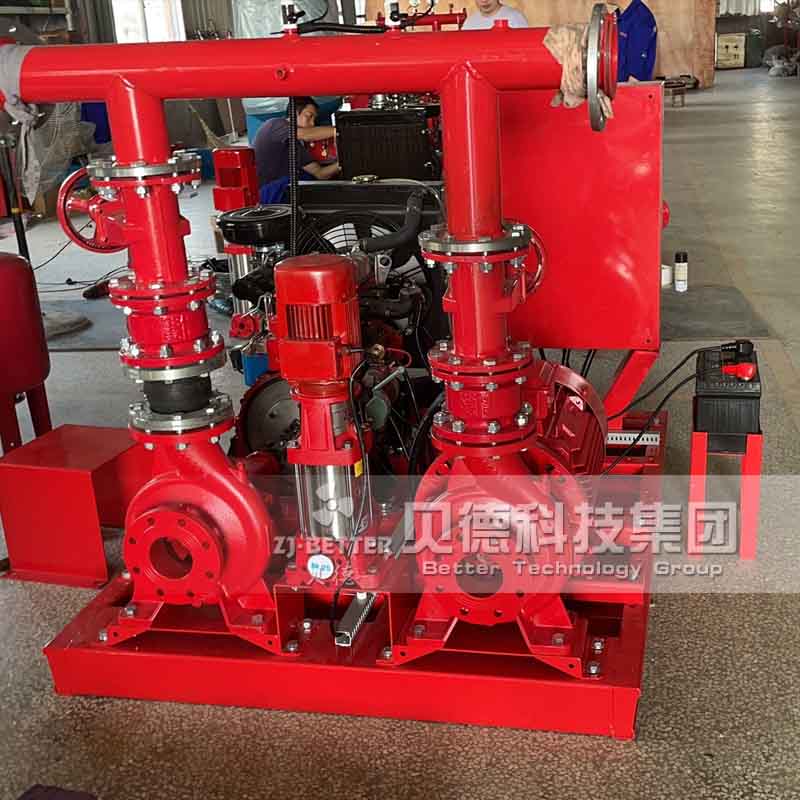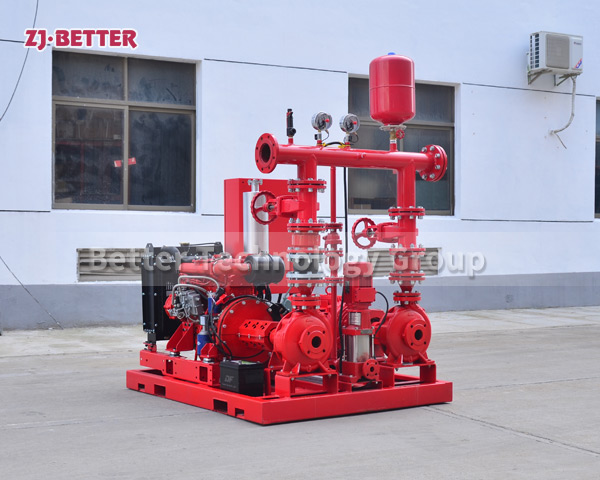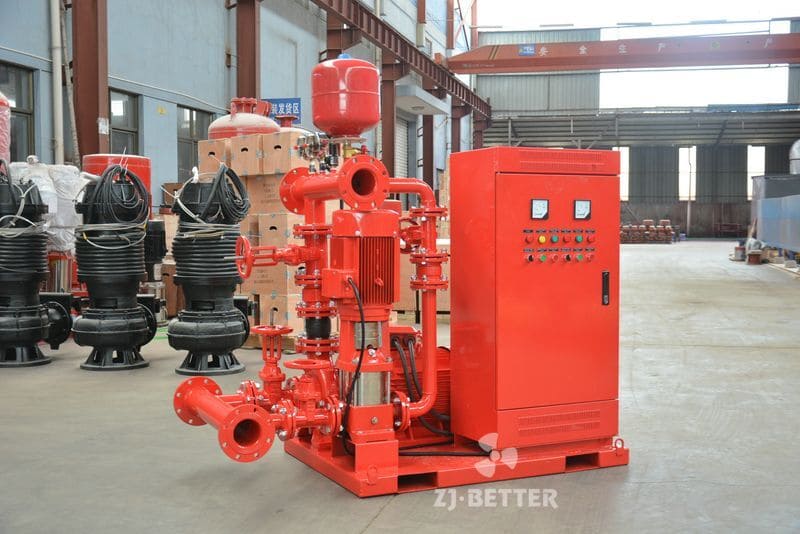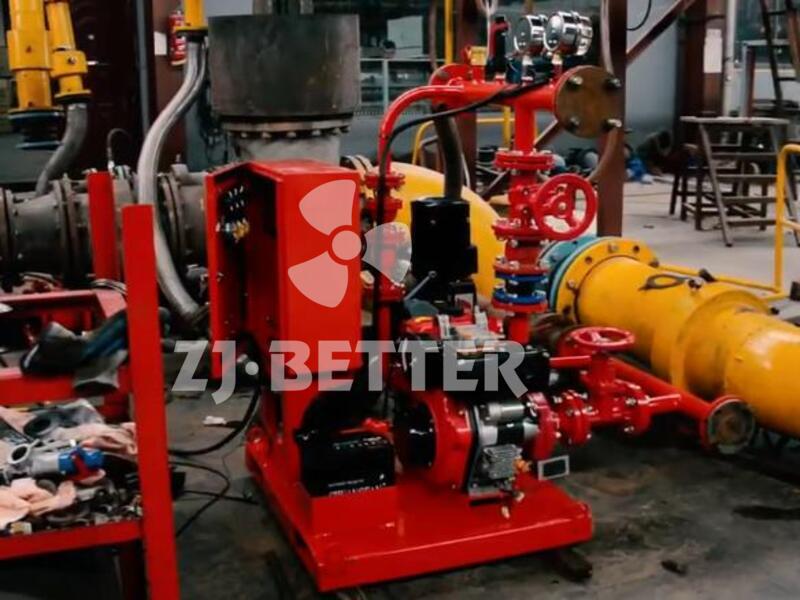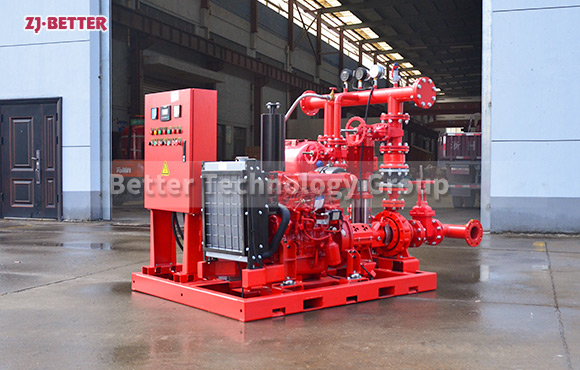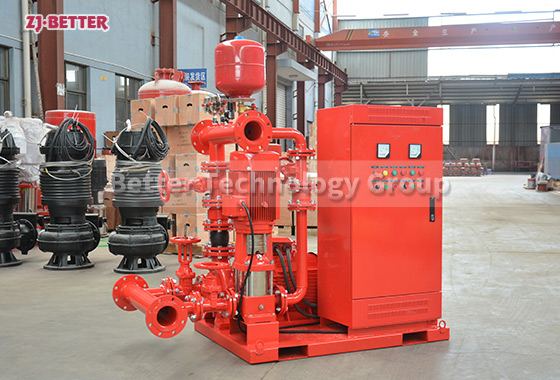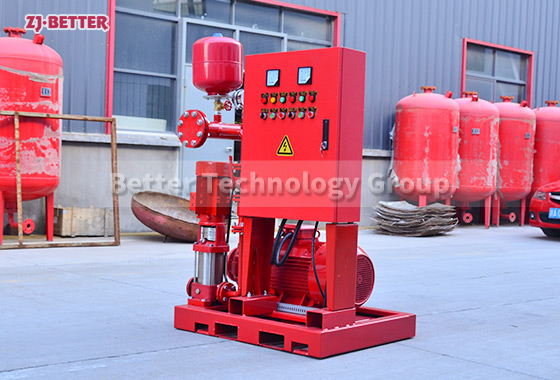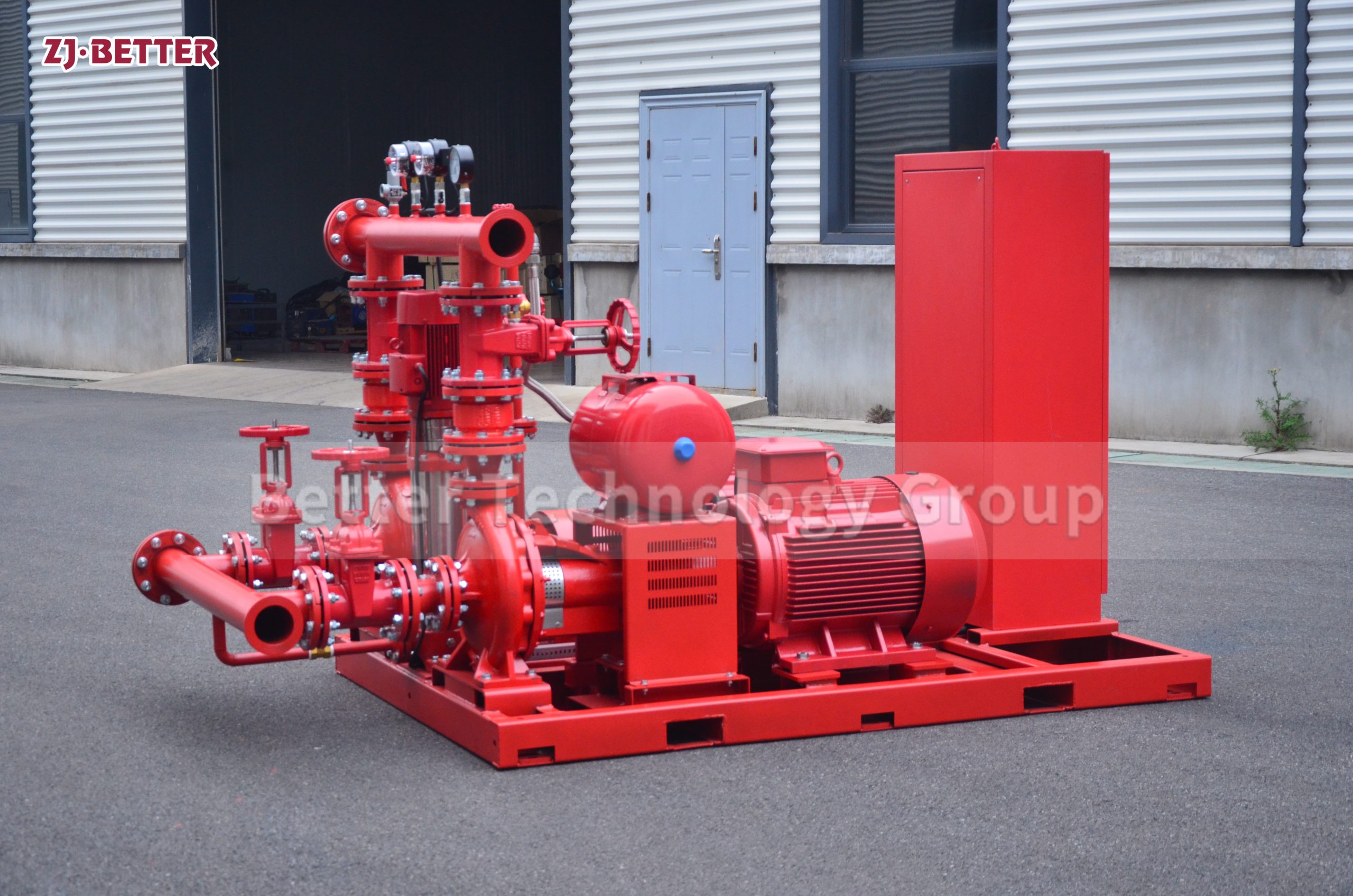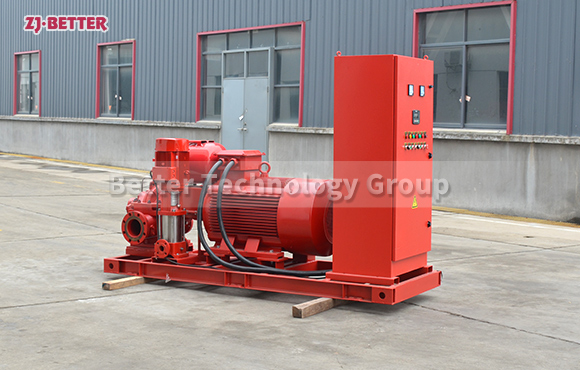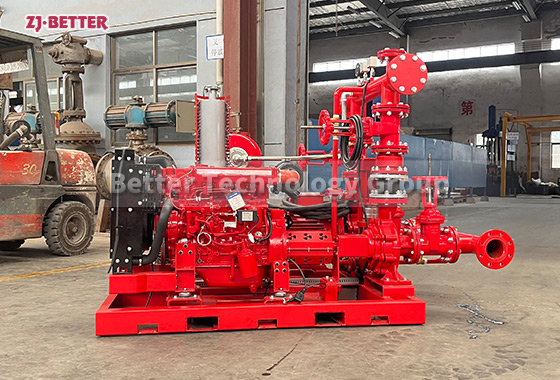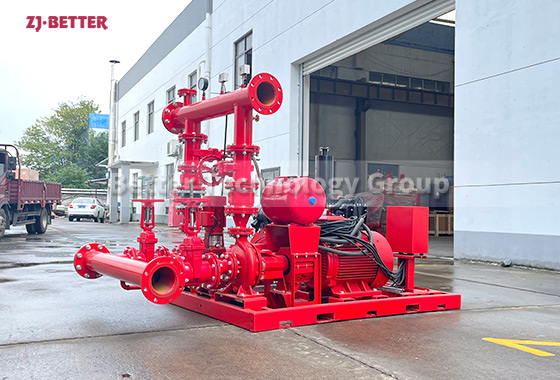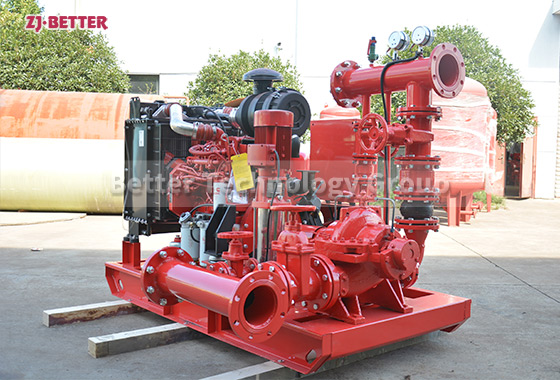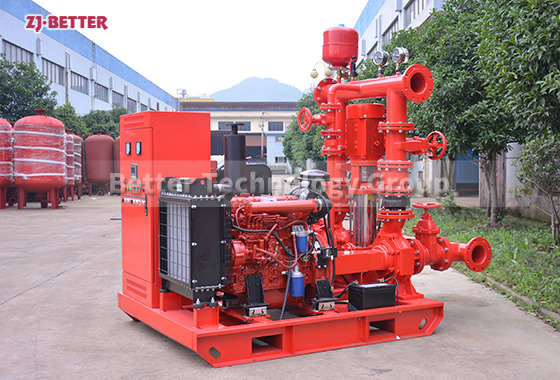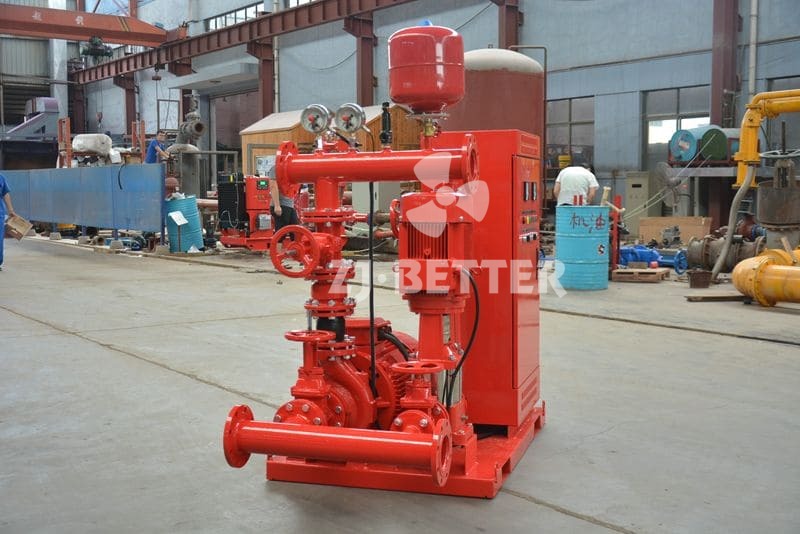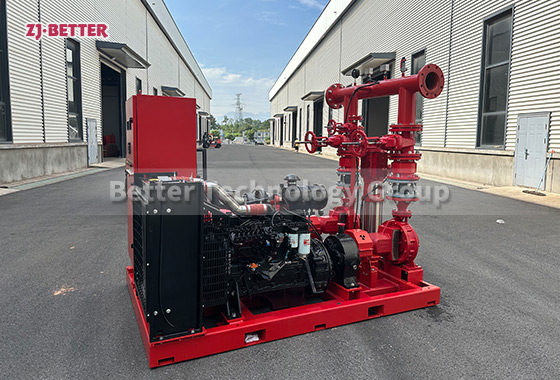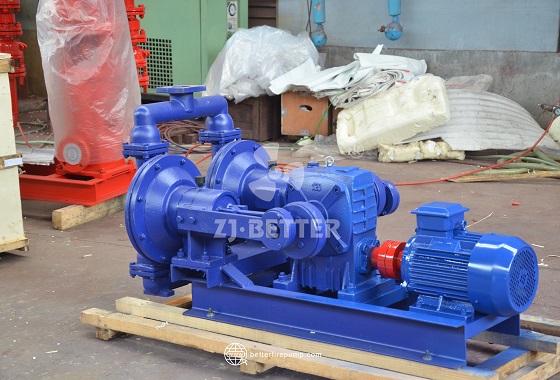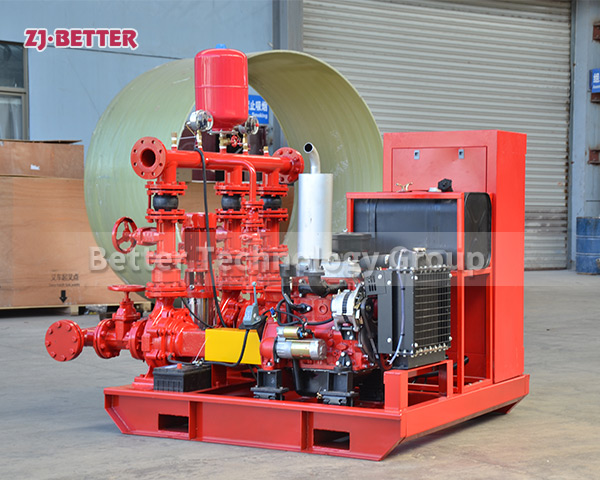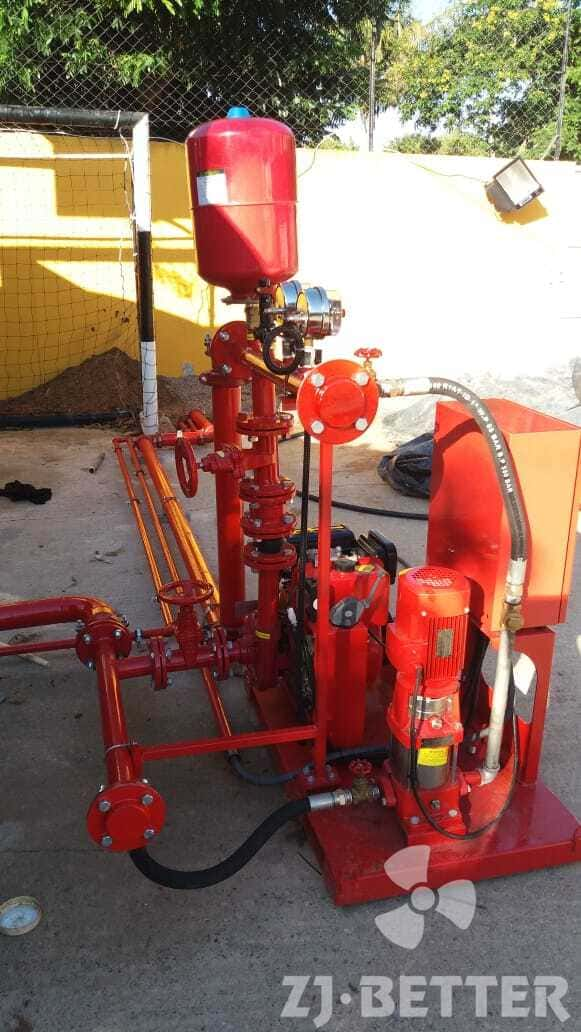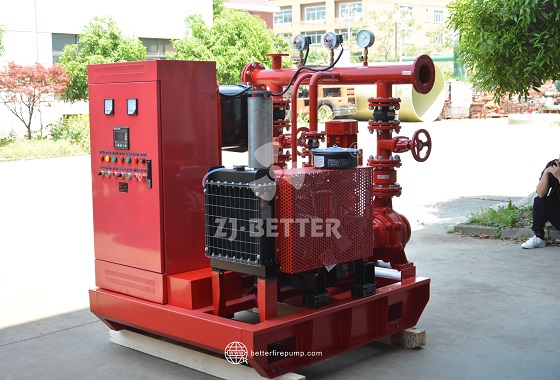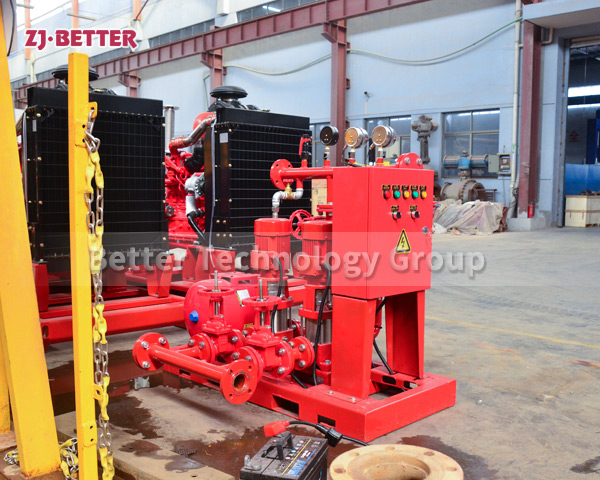XBC-IS Diesel Engine + Jockey Fire Pump Set
The pump have the National Fire Protection Association Standard NFPA20 standards.The diesel engine fire pump is equipped with the characters of good and strong overload capacity, compact structure, easy to maintain and high degree of automation.
Fire Pump Equipment for warehouses, docks, airports, petrochemical, power plants, liquefied gas, textiles, ships, oil tankers and other occasions of a fire service.
Components
1. Diesel engine pump: kinds of end suction pump, split case pump.
2. Jockey pump: vertical, small flow, head is higher than electric or diesel pump.
3. Control panel: control the pumps automatically with overload, overcurrent protection.
4. Accessories: Suction pipe, Discharge pipe with flange, Battery, Gate valve, Check valve, Flexible expansion joints, Pressure switches, Pressure gauge, base frame etc.

